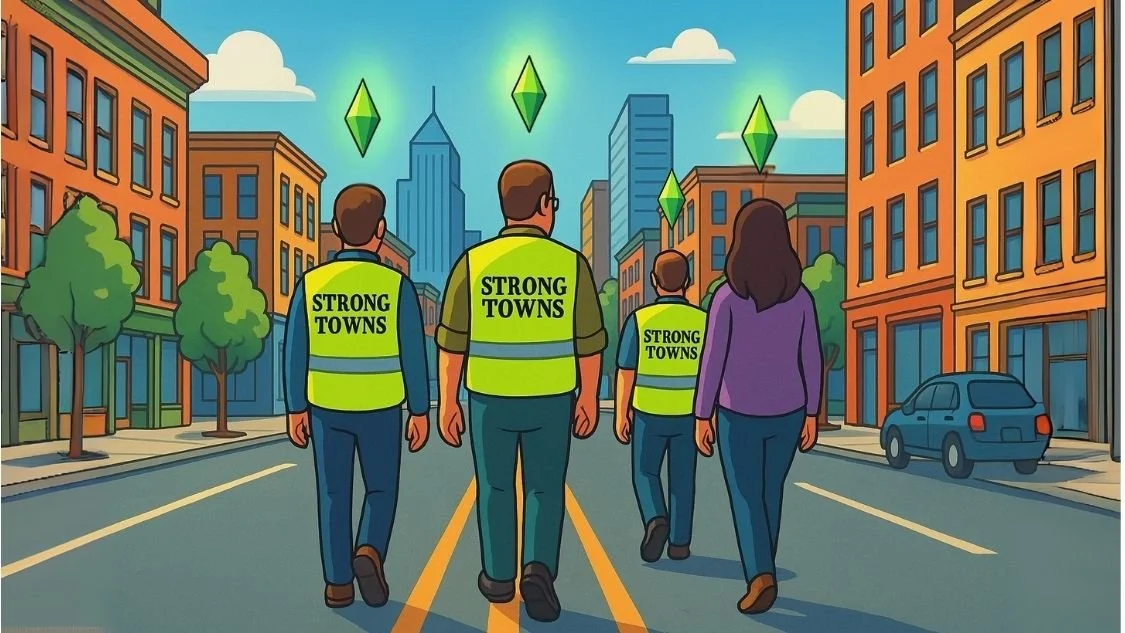Indianapolis Community Reduces Crashes by 73% – Here’s How
An example of “tactical urbanism,” where easily sourced materials like cones and hay are used to adjust the design of the road to encourage slower, safer driving.
Tired of excessive speeds on a neighborhood street, the Community Heights Neighborhood Organization in Indianapolis, Indiana took matters into their own hands.
After installing temporary traffic barriers as part of a "tactical urbanism" initiative, crashes plummeted by 73% in just a few months. “Before the barriers were placed, we were seeing 30 crashes every three months, that’s one every three days, Leslie Schulte, a member of the Organization told the news. During the experiment, which lasted from June to November 2023, that number dropped to just eight.
Schulte presented the results at a public meeting in urging city officials to take notice. The area had long been plagued by high-speed traffic, with many drivers exceeding the posted speed limit, and far too many close calls on a daily basis. As the intervention illustrated: the street’s design was the culprit.
The success of the modest barricades underscores the potential impact of tactical urbanism, which allows communities to experiment with solutions in real time, gathering data to inform larger policy decisions. The installation of traffic barriers, while temporary, has shown how small, low-cost changes can have an immediate, positive effect on traffic safety.
Local cyclist Jakob Morales added another layer to the story, noting, “Drivers just aren’t paying attention. They’re looking at their phones. They’re waiting for the red light to change to a green. It’s not fun out there to be a pedestrian or a cyclist.” His words echo the broader reality: driver behavior is shaped by street design—and when streets prioritize speed and vehicle throughput, safety suffers.
Leslie Schulte presenting her findings and an image of the barriers the Community Heights Neighborhood Organization installed.
The temporary barriers were installed with the approval of the Indianapolis Department of Public Works, and the project was part of a larger effort to test the effectiveness of small-scale interventions before committing to permanent infrastructure changes. Schulte called on the city to consider the results and explore making similar modifications to other streets to reduce crashes and improve safety. “We are asking the city to look at our results to see what they can do to mimic the temporary design and make real infrastructure changes,” she said.
A year later, she got her wish. The city's Department of Public Works announced plans to permanently redesign the stretch, saying neighbors not only provided critical data, but also a roadmap to possible solutions. "This would be one of the first tactical urbanism programs that a community organization has done in Indianapolis that is going to lead to a major full-scale redesign of their roadway,” one member of the Department said.
You Don’t Have to Wait for Another Crash to Act
When your constituents call for safer streets, they aren’t asking for a study that takes years or a plan that sits on a shelf. They’re asking for solutions—now. Crashes are happening today, and communities are looking to you for leadership that responds with urgency and results.
The good news? You don’t need a massive budget or a multi-year capital plan to begin making change. What you do need is a way to focus attention, ask better questions, and start working with what you already have.
That’s exactly what the Crash Analysis Studio offers: a shift away from a system that blames individuals, and toward a practical, repeatable process that helps you identify dangerous patterns, test immediate interventions, and build momentum toward long-term improvements. It’s not about fixing everything at once—it’s about preventing the next crash tomorrow.
The results in Indianapolis speak for themselves: a grassroots experiment sparked real change. What began as a small, temporary intervention proved so effective that it helped shape a permanent redesign. That’s the power of acting now—with the tools you already have. The results weren’t just visible—they were undeniable.
Your residents are counting on you to act—not someday, but now. Get expert, on-site help building the Crash Analysis Studio model that’s right for your place.







